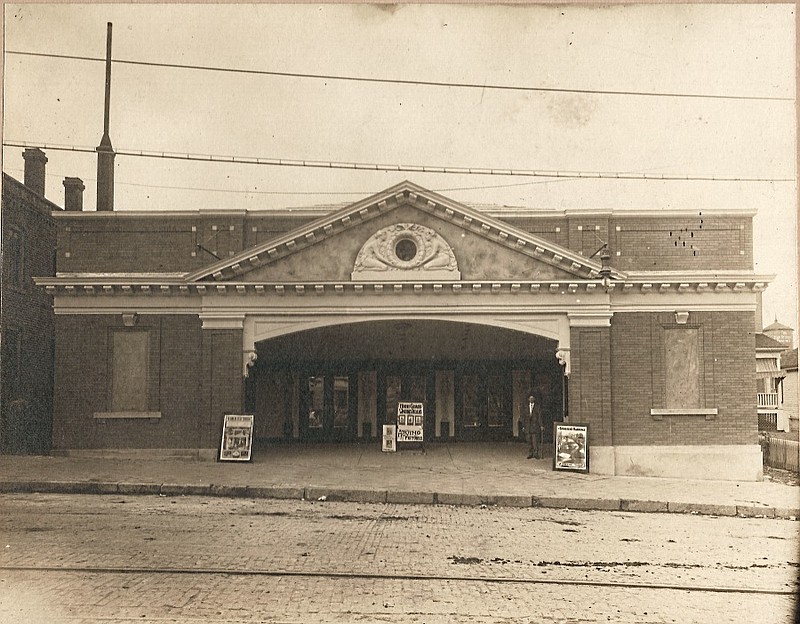The beginnings of what we know of as the "movies" came about with Edison's invention, the kinetoscope, in 1891. It immediately gained interest from the public. In 1895, major refinements by the Lumiere Brothers of Lyon, France, resulted in a lightweight camera and projection equipment. The new design made more varied and versatile filming which was more interesting to the public.
The moving pictures were such an improvement over still photography, only several decades old, that it was so appealing to its viewers it became an overnight novelty success.
By the end of the 19th century, the novelty effect began to wear off and gave way to more serious and professional entertainment. Briefly, between 1904-08, many nickelodeon theaters appeared in the United States, playing one-reel "shorts" of around 16 minutes.
In 1910, the appearance of the multi-reel "feature films" captured the imagination of viewers as a new form of entertainment that had come of age. Vaudeville and Nickelodeon theaters were rapidly converted to movie theaters, and new theaters were rapidly being built to present the silent movies that were a result of a rapidly growing industry. As movie-going increased in popularity, there was a proliferation of comfortable and lavishly decorated theaters across the country to satisfy the growing demand for movie entertainment.
Jefferson City was not immune to the demand for movies; consequently, a significant number of movie theaters sprang into being between 1910-13. Among these new theaters were names like Jefferson, Grand, Star, West End, Roxie and Dunklin. Some of these theaters would close and disappear early, while others would prosper and maintain audiences. Several of these theaters would eventually experience a change in ownership and an associated change of name. For this article, we will limit the coverage to six distinct theaters in Jefferson City's downtown and southside area.
Dunklin Theater, 115 E. Dunklin Street, initially opened in November 1914 under the name Southside Theater, and within weeks, the name was changed to Dunklin Theater. After several changes of ownership, the theater was permanently closed by Christmas of 1916, having been open less than two years.
Roxie Theater, 218 Monroe St., initially opened in 1911 and hosted both vaudeville and movies. In December 1917, the theater experienced a fire that caused significant destruction. The theater was rebuilt and continued business. It was announced in a local newspaper the theater would reopen under Dubinsky management in 1937 as the Gem Theater. The Dubinsky Brothers operated a chain of more than 40 theaters in Missouri and Kansas. The Gem continued under that name until it closed in 1951.
State Theater, 315 E. High St., originally opened as the Miller Theater in 1929. It was later remodeled, and by 1941, it was under the management of the Durwood theater chain and had been renamed the State Theatre. It closed permanently in 1961 and was demolished in 1969.
Although other sources indicate the Jefferson Theater, 101 E. High St., opened in 1913 as a nickelodeon theater, the theater appears on the 1908 Sanborn map of Jefferson City. Although it had a street address on High Street, the theater auditorium proper was behind what we later knew as Schell & Ward, the Yum-Yum Shop and the next shop to the east. The auditorium extended to the alleyway adjacent to the Broadway Building and was the largest theater in Jefferson City. The Jefferson Theater closed in 1935 only to reopen under Dubinsky management in 1937. It remained open for an indeterminate period of time and had been closed for some time when totally destroyed by fire Dec. 4, 1950.
Star Theater, 225 Madison St., opened in 1913 on the east side of Madison Street as a nickelodeon theater. It lasted until 1915 and was eventually destroyed. Little else is known about this theater.
Dubinsky Bros. announced the purchase of the Krafft Motor Company building, 111 W. High St., and that the erection of a new theater on the site would begin Feb. 1. The Capitol Theater, which is best known by more contemporary generations, was known to be the theater which presented the best known "first run" movies.
It was opened June 5, 1935, as part of the Dubinsky circuit. It was two levels with the main floor and a balcony with a mezzanine intervening. It was built and decorated in the Art Deco style and had a total seating capacity of 1,270 seats - 900 on the main floor and 370 in the balcony. It joined the Durwood chain in 1948 and closed May 15, 1970. The theater was later converted to a one-level parking garage with many of the interior features tattered but still intact. The building is still essentially intact today.
Wayne Johnson is a Jefferson City native and retired engineer and chemist. He has worked closely with four local historical societies, setting up websites, digital imaging, search and retrieval of those images, and now compiling histories of people, places and events in Callaway and Cole counties' early history.

